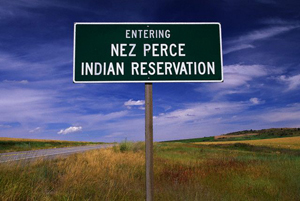 By Kirk Johnson | The New York Times
By Kirk Johnson | The New York Times
LAPWAI, Idaho — In this remote corner of the Northwest, most people think of gas as something coming from a pump, not a well. But when it comes to energy, remote isn’t what it used to be.
The Nez Perce Indians, who have called these empty spaces and rushing rivers home for thousands of years, were drawn into the national brawl over the future of energy last month when they tried to stop a giant load of oil-processing equipment from coming through their lands.
The setting was U.S. Highway 12, a winding, mostly two-lane ribbon of blacktop that bisects the tribal homeland here in North Central Idaho.
That road, a hauling company said in getting a permit for transit last month from the state, is essential for transporting enormous loads of oil-processing equipment bound for the Canadian tar sands oil fields in Alberta.
When the hauler’s giant load arrived one night in early August, more than 200 feet long and escorted by the police under glaring lights, the tribe tried to halt the vehicle, with leaders and tribe members barricading the road, willingly facing arrest. Tribal lawyers argued that the river corridor, much of it beyond the reservation, was protected by federal law, and by old, rarely tested treaty rights.
Also: EPA to hold hearings on Arizona Navajo coal plant emissions











